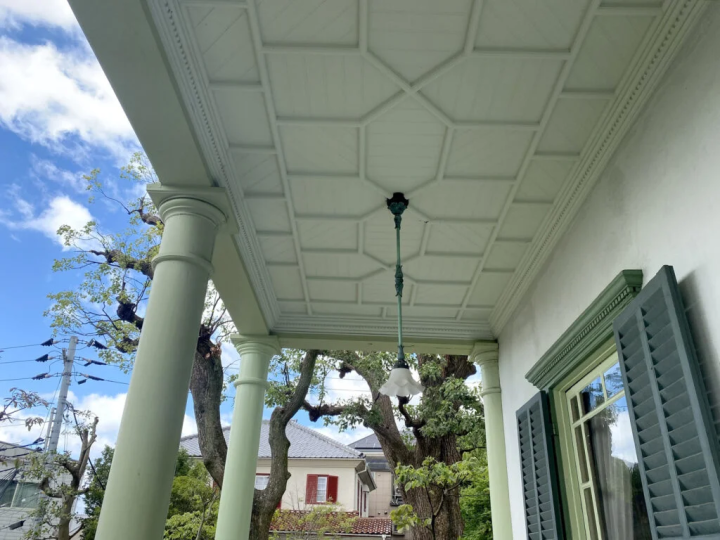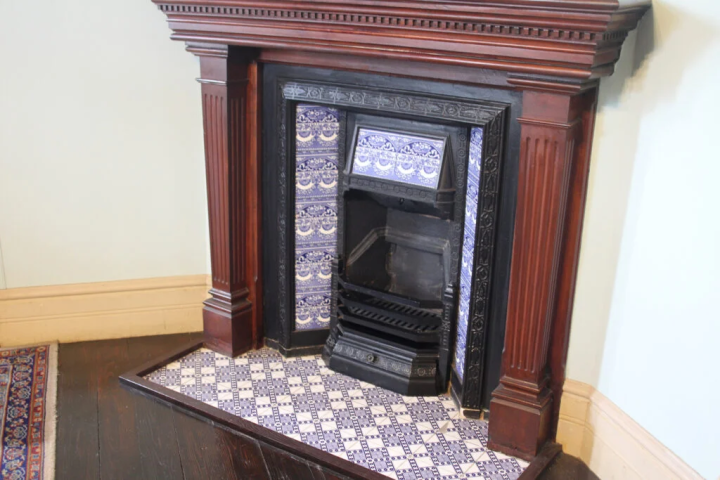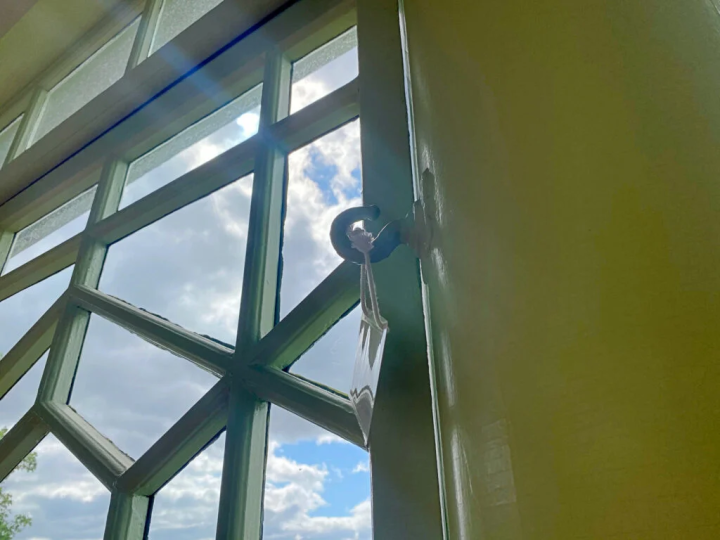[Kobe City] Ijinkan is a nationally designated important cultural property! Visit the former American Consul General's residence "Moegi no Yakata"
![[Kobe City] Ijinkan is a nationally designated important cultural property! Visit the former American Consul General's residence "Moegi no Yakata"](https://resources.matcha-jp.com/resize/720x2000/2023/12/07-155604.webp)
``Moegi no Yakata'' stands in the Kitano Ijinkan district and has an eye-catching pale green exterior. It features a front porch, large windows, and a veranda, and is typical of colonial architecture. The balcony is also a popular photo spot with a panoramic view of the Kobe cityscape.
-
Table of Contents
- A Western-style mansion that was the residence of former U.S. Consul General Hunter
- The second floor balcony is a viewing spot with a panoramic view of Kobe city.
- How to get to "Moegi no Yakata"
- Great value bus tickets
- basic information
A Western-style mansion that was the residence of former U.S. Consul General Hunter
![[Kobe City] Ijinkan is a nationally designated important cultural property! Visit the former American Consul General's residence "Moegi no Yakata"](https://resources.matcha-jp.com/resize/720x2000/2023/12/08-155614.webp)
If you walk north from Sannomiya Station on all lines towards the mountain side, you will come across Kitano Ijinkan-gai, a district dotted with Western-style houses built by foreign visitors in the Meiji and Taisho periods. The exotic atmosphere of the streets makes it one of Kobe's most popular tourist spots. One of the buildings that stands out among them is Moegi no Yakata, with its beautiful pale green exterior. Built in 1903 (Meiji 36), the Western-style building was constructed as the private residence of U.S. Consul General Hunter Sharp, and was designated an Important Cultural Property of Japan in 1980 (Showa 55).

"Moegi no Yakata" is characterized by its intricate designs that can be seen throughout the building, including two different shaped bay windows, a staircase decorated with arabesque patterns, and mantelpiece fireplaces with different tile patterns in each room.

It was originally called the "White Foreigner's House," but during renovations in 1987, it was discovered that the exterior siding was a pale green. It was later restored to its original color and given its current name. It has also been used as a filming location for numerous movies and dramas, including the NHK morning drama "Beppin-san" that aired in 2016, and autographs of actors who have visited the building are on display. On the first floor there is a reception room, dining room, and study, as well as a kitchen and serving room in the private area.
![[Kobe City] Ijinkan is a nationally designated important cultural property! Visit the former American Consul General's residence "Moegi no Yakata"](https://resources.matcha-jp.com/resize/720x2000/2023/12/08-155617.webp)
When you take off your shoes and go inside, the first thing you'll see is a massive staircase. Looking closely, you'll see that the staircase is decorated with intricate arabesque patterns, giving it a strong presence.
![[Kobe City] Ijinkan is a nationally designated important cultural property! Visit the former American Consul General's residence "Moegi no Yakata"](https://resources.matcha-jp.com/resize/720x2000/2023/12/08-155618.webp)
The wood used is cherry wood, which is known for its strength. When viewed from the front, Hunter's attention to detail can be seen in the way the patterns are arranged so that they do not overlap.
![[Kobe City] Ijinkan is a nationally designated important cultural property! Visit the former American Consul General's residence "Moegi no Yakata"](https://resources.matcha-jp.com/resize/720x2000/2023/12/08-155619.webp)
The first floor was mainly used to entertain guests, and each room is impressive for its extravagant design. The ceilings are 3.74m high, creating a spacious space. The entrances to each room are designed to resemble a gate, and it is said that the concept was that each room was like a house, inviting guests in.

![[Kobe City] Ijinkan is a nationally designated important cultural property! Visit the former American Consul General's residence "Moegi no Yakata"](https://resources.matcha-jp.com/resize/720x2000/2023/12/08-155621.webp)
Mr. Sharp actually lived there for about four years, and after that the house changed hands several times, from Germans to Japanese, Americans, and Germans. The current owners of the house, the Kobayashi family (former Kobe Electric Railway president Kobayashi Hideo), took possession of the house in 1944 (Showa 19), and lived there until 1978 (Showa 53). Therefore, some of the furnishings that were owned by the Kobayashi family are on display inside the house.
![[Kobe City] Ijinkan is a nationally designated important cultural property! Visit the former American Consul General's residence "Moegi no Yakata"](https://resources.matcha-jp.com/resize/720x2000/2023/12/08-155622.webp)
Of particular note are the marble bust and piano in the dining room. The marble bust was once owned by Mussolini, the Italian fascist leader! It is said that Mr. Suga Tatehiko, the Japanese painter and grandfather of Mrs. Kobayashi, brought it back from Italy in exchange for one of his own works.
![[Kobe City] Ijinkan is a nationally designated important cultural property! Visit the former American Consul General's residence "Moegi no Yakata"](https://resources.matcha-jp.com/resize/720x2000/2023/12/08-155623.webp)
The 88-key piano, also on display in the dining room, is a rare item that was made during Chopin's time. Chopin lived from 1810 to 1849, so this piece is about 170 years old. Take your time to explore the museum, paying attention to these precious pieces of furniture.
The second floor balcony is a viewing spot with a panoramic view of Kobe city.
![[Kobe City] Ijinkan is a nationally designated important cultural property! Visit the former American Consul General's residence "Moegi no Yakata"](https://resources.matcha-jp.com/resize/720x2000/2023/12/08-155624.webp)
While the first floor was used to entertain guests, the second floor was a private space with bedrooms, children's rooms, a living room, and a dressing room.

The highlight of the second floor is the fireplaces in each room. The mantelpieces around the fireplaces are decorated with tiles made by the British company Minton, and each room has a different mantelpiece design.
![[Kobe City] Ijinkan is a nationally designated important cultural property! Visit the former American Consul General's residence "Moegi no Yakata"](https://resources.matcha-jp.com/resize/720x2000/2023/12/08-155626.webp)
The balcony on the second floor is a popular photo spot that often appears in guidebooks. With a view of the Kobe cityscape outside the window, it is often used for magazine and movie shoots.
![[Kobe City] Ijinkan is a nationally designated important cultural property! Visit the former American Consul General's residence "Moegi no Yakata"](https://resources.matcha-jp.com/resize/720x2000/2023/12/08-155627.webp)
If you look closely at the window glass, you will notice that it has some distortion here and there. This glass was made in the Meiji period and, unlike modern glass, it has a somewhat retro feel to it.

![[Kobe City] Ijinkan is a nationally designated important cultural property! Visit the former American Consul General's residence "Moegi no Yakata"](https://resources.matcha-jp.com/resize/720x2000/2023/12/08-155629.webp)
Also, because this is a balcony, it was built with the assumption that rain would get in, so it is slightly sloped to make it easier for rainwater to flow away. The standing boards under the windows can also be removed, and are designed to improve ventilation. If you pay attention to such small details while touring, you will enjoy the house even more.
![[Kobe City] Ijinkan is a nationally designated important cultural property! Visit the former American Consul General's residence "Moegi no Yakata"](https://resources.matcha-jp.com/resize/720x2000/2023/12/08-155630.webp)
In addition, in the garden of "Moegi no Yakata", there is an exhibit of the chimney that collapsed during the Great Hanshin-Awaji Earthquake, which has been preserved in its original state. The walls of the building were built using a rare method called the "German clapboard construction method", in which overlapping boards are laid so that there are no uneven surfaces, so be sure to check it out as well.
How to get to "Moegi no Yakata"
Moegi no Yakata is located about a 15-minute walk from Shin-Kobe Station or Sannomiya Station. If you are using the City Loop, it is about a 5-minute walk from the Kitano Ijinkan stop.
If you are coming by car, please use the nearby paid parking lot as there is no parking lot. "Moegi no Yakata" allows you to learn about the lifestyles of foreign visitors during the Meiji period. The interior of the building, where Mr. Thomas' attention to detail can be felt everywhere, is dotted with elaborate designs and is full of things to see.
As part of the Hyogo Tenoir project, a special tour is being held until the end of September, including the closed areas of the neighboring Kazamidori-no-Yakata and Moegi-no-Yakata. If you would like to tour the museum while listening to an explanation, why not join us?
Great value bus tickets
Kobe 1-day bus ticket
The City Loop is a sightseeing bus that goes around the main tourist spots in Kobe. It is a great value ticket for those who are planning to do some sightseeing in Kobe! If you present a 1-day or 2-day pass, you can also get a discount on the admission fee to Moegi no Yakata.
Hyogo Amazing PassThis ticket is recommended for those who are considering touring Himeji and Hyogo prefecture in addition to Kobe! This mobile ticket allows unlimited rides on the Kobe 1-day bus ticket and Shinki Bus route buses for 2,500 yen per day. This is a great deal for those who are planning to visit Kobe city and beyond!
Special tour reference: Hyogo Terroir Travel "Weathercock House & Moegi House Backyard Tour"
(Writer: Nakata/West Plan)
*This article is current as of July 2023. Prices include tax. Product contents and prices may be subject to change.
basic information
Moegi no Yakata
Address: 3-10-11 Kitano-cho, Chuo-ku, Kobe, Hyogo Prefecture
Phone number: 078-855-5221
Business hours: 9:30-18:00 (entry until 17:45)
Closed: 3rd Wednesday and Thursday of February
Admission fee: 400 yen for adults, free for high school students and younger
*350 yen for those with a City Loop 1-day pass
Access: 15 minutes on foot from Shin-Kobe Station or Sannomiya Station on all lines. 5 minutes from the Kitano Ijinkan stop on the City Loop.
Parking: None
HP: https://www.kobeijinkan.com/ijinkan_list/moegi
Social Media: Instagram
What are good things and good experiences? There are many characteristics such as having a story to tell, overflowing with the thoughts of the creator, having a history, and being loved by the locals. Have you ever come across a special thing or experience that made you want to tell someone about it? And as a result of telling, someone new leads to something. We think that's what "good" is all about. In order to deliver such encounters to our customers, we discover Hyogo's good things based on the concept of "talk, communicate, and connect", and provide information that will shorten the emotional distance between customers and the region of Hyogo Prefecture.
The contents on this page may partially contain automatic translation.


![[Kobe City] A one-day bus ticket is a great deal if you want to visit Kitano Ijinkan-gai, Nankin-cho, and other famous spots in Kobe!](https://resources.matcha-jp.com/resize/200x2000/2023/09/25-146866.webp)
![[Hyogo Prefecture] Unlimited rides on local buses for just 2,500 yen! Travel around Hyogo Prefecture at a great price](https://resources.matcha-jp.com/resize/200x2000/2023/09/25-146913.webp)






























![[Coupon Available] Attention Overseas Winter Sports Fans! Nagano's Sports Depot Has Evolved](https://resources.matcha-jp.com/resize/720x2000/2026/01/05-254819.webp)
![[2 hours from Tokyo ] 10 Quiet and Breathtaking Views of Mount Fuji in Yamanashi Hokuto City , Yamanashi - Part 2](https://resources.matcha-jp.com/resize/720x2000/2025/12/16-253037.webp)

![[Reopening in March 2026] Ikoma Sanjo Amusement Park Park, 45 minutes from Osaka , with free admission](https://resources.matcha-jp.com/resize/720x2000/2024/08/28-194409.webp)